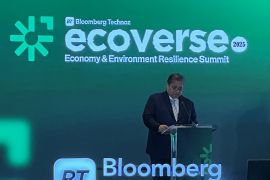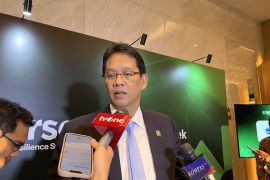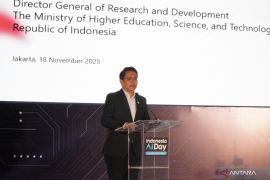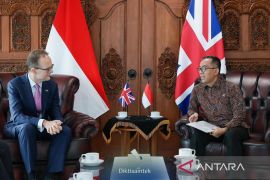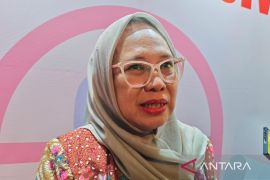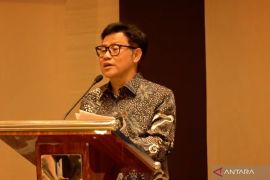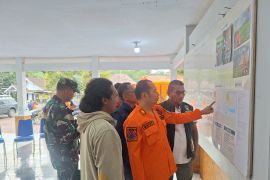The "Advanced Energy for Life" campaign will work to educate and mobilize world leaders, multi-national organizations, a wide range of institutions and stakeholders, and the general public to:
- End the crisis of global energy poverty, which affects half the world's population and leads to crippling impacts to human health, standards of living and damage to the environment;
- Drive policies and support actions that increase access to reliable, low-cost power – particularly today's advanced coal technologies – that extends lives, builds economies and improves both natural and indoor environments; and
- Employ today's advanced technologies to reduce key power plant emissions. Longer term, pursue greater development of next-generation technologies and the regulatory framework to capture, use and store carbon dioxide emissions.
The need for modern energy is enormous. Half of the world's 7 billion people lack adequate access to energy, including 1.2 billion children, based on data from the International Energy Agency and the World Bank. Household air pollution from indoor fires is estimated to be the fourth leading cause of death in the world, and results in a stunning 100 million years of life prematurely lost as measured by Disability Adjusted Life Years (DALY), a metric established by the World Health Organization. Each DALY represents one year of healthy life lost to disease.
"These sobering statistics demonstrate that energy poverty is the real human and environmental crisis facing the world today," said Boyce. "The greatest crisis we confront is not an environmental crisis predicted by computer models, but a human crisis fully within our power to solve. For too long, we have been focused on the wrong priorities."
Also driving the need for affordable energy are longer-term demographic trends. The global population is expanding by more than 200,000 people each day. And urban areas are forecast to grow by more than 70 million annually through 2020, according to the United Nations Department of Economic and Social Affairs.
In any action plan to end global energy poverty and increase access to low-cost electricity, all energy forms are necessary. Coal is the world's most abundant energy source and fastest-growing major fuel. And coal is expected to surpass oil as the largest energy source in coming years, according to the International Energy Agency and other analysts. So coal plays a special role in the war to end global energy poverty and increase access to low-cost electricity while using today's advanced technologies to improve emissions. Coal is key to human health and welfare along with a clean environment.
"Coal is a fundamental environmental solution when turned into electricity and synthetic natural gas at large scale," said Boyce. "Coal-fueled electricity and synthetic natural gas can eliminate widespread deforestation from gathering biomass as well as the devastating effects of energy poverty." And coal is a unique fuel of the future based on its density, availability and cost benefits.
"The drive by some to reduce coal use and make energy scarce and expensive is unsustainable, hurting people and harming the environment," said Boyce. "We need to recognize the enormous health and environmental benefits in ending energy poverty, eliminating household air pollution and increasing access to low-cost electricity. Everyone in the world deserves to live as well as those in developed nations. Let's use more energy, more cleanly, every day."
The strengths of coal in meeting these needs are demonstrated all around the world:
- In the United States, coal is used to generate approximately 40 percent of electricity. The states that don't use coal pay electricity rates that are more than 50 percent above states that use substantial coal for electricity generation. High energy costs create a regressive tax on Americans, with lower-income households spending a far greater portion of their family income on energy bills. Coal's environmental profile has continued to improve: Coal used for electricity generation has increased more than 170 percent since 1970, while key power plant emissions have been reduced by nearly 90 percent per unit of electricity.
Moving forward, Peabody believes that the U.S. policy framework must recognize coal's role in low-cost electricity, protect existing coal plants from regulatory overreach that would lead to premature retirements and skyrocketing electricity rates, and encourage development of efficient new coal plants using today's advanced technologies while investing in research and development for next-generation technologies.
- Australia leads the world in coal exports. Coal is the nation's second-largest export and essential for jobs and economic strength, contributing nearly $43 billion each year to the economy, based on research from the Royal Melbourne Institute of Technology. Coal also is the lowest-cost fuel for electricity generation.
- In China, coal demand is rising as it increasingly is used for electricity generation and is turned into natural gas, transportation fuels and chemicals to drive the world's fastest-growing economy. China will reduce the direct use of coal in residences and businesses while it uses far more coal in electricity plants and conversion applications. The nation also is replacing older coal plants with advanced coal units as well as using synthetic gas from coal in a range of applications. This approach, along with installation of major emissions controls on power plants and replacing older plants with advanced technologies, is similar to the approach that the United States has taken over the past half century.
"The world continues to turn to coal to solve its largest energy and economic challenges, but we need far more action to expand access to low-cost electricity to help families, power economies and pull billions out of energy poverty," said Boyce. "We also need a new approach to rational environmental policy. We submit that the right path is through increased deployment of today's advanced technologies such as supercritical coal generation that lead to continued emissions reductions. Longer term, research and development in next-generation technologies can lead to the ultimate goal of near-zero emissions from coal."
Advanced coal technologies are in use today, including high-efficiency supercritical coal generation, state-of-the-art emissions control applications and coal conversion methods through gasification. A critical step in improving emissions around the world would be far greater deployment of these existing technologies.
Next generation technologies such as carbon capture, use and storage applications need far greater research and development investment, including greater private-public partnerships in research and development, as well as new and improved regulations to allow for carbon storage.
Core elements of the "Advanced Energy for Life" campaign are a digitally-based education program highlighting the widespread benefits of inexpensive energy access and the vital role coal-fueled electricity can play in solving the world's energy issues; a research institute that will develop and distribute studies and policy-oriented intellectual capital; and direct outreach to governments, institutions and other stakeholders toward actions that increase energy access and expand the development and use of advanced technologies.
Advanced Energy for Life is a campaign to raise awareness and support to end global energy poverty, increase access to low-cost electricity and improve emissions using today's advanced clean coal technologies. Please join in the campaign. Visit us at AdvancedEnergyForLife.com and Advanced Energy for Life on Facebook, YouTube, Tumblr and Google+. Use our Twitter handle @AdvancedEnergy.
FOR MORE INFORMATION:
Beth Sutton, Vice President
Global Advocacy Communications
+1.928.699.8243
(Logo: http://photos.prnewswire.com/prnh/20140226/CG70548LOGO)
(Logo: http://photos.prnewswire.com/prnh/20120724/CG44353LOGO)
Editor: PR Wire
Copyright © ANTARA 2014



